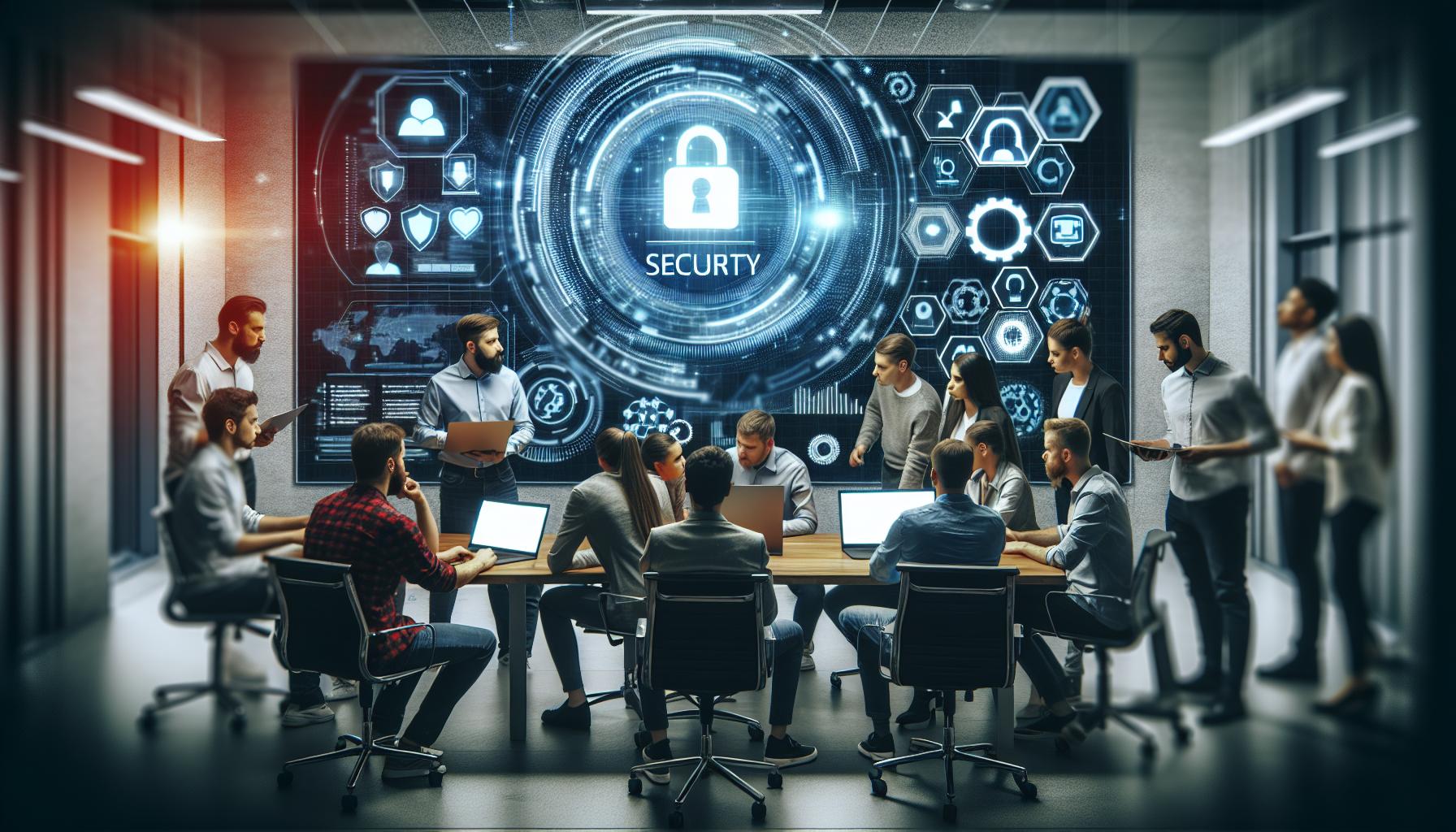In a world where cyber threats lurk around every digital corner, security software development has become the unsung hero of the tech universe. Picture it: a brave knight in shining armor, ready to battle malicious hackers and pesky malware. But instead of a sword, this knight wields lines of code and algorithms sharper than a double-edged sword.
Developing security software isn’t just about writing code; it’s about crafting a digital fortress. It’s a high-stakes game where every keystroke counts. As cybercriminals get craftier, the demand for innovative security solutions skyrockets. So, whether you’re a seasoned developer or a curious newbie, diving into the world of security software development could be your ticket to not just a stable job but also a chance to save the day—one line of code at a time.
Security Software Development
Security software development plays a pivotal role in protecting digital assets against evolving cyber threats. Developers focus on creating solutions that proactively address potential vulnerabilities within systems and applications.
Importance of Security in Software Development
Security has emerged as a fundamental aspect of software development. It safeguards sensitive data and maintains user trust. Incorporating security from the initial design stage helps reduce risk significantly. Organizations face high costs associated with data breaches, often exceeding $3 million on average. Adopting secure coding practices promotes resilience against attacks and enhances overall software quality. Security measures also align with compliance regulations, crucial for businesses operating globally.
Common Threats and Vulnerabilities
Many common threats challenge security software development. Malware remains pervasive, affecting millions of devices annually. Phishing schemes trick users into providing sensitive information, making awareness essential. Additionally, ransomware attacks are on the rise, with businesses experiencing sharp increases in demands for payment. Vulnerabilities in software, such as SQL injection and cross-site scripting, expose systems to exploitation. Continual assessment of these threats guides the development process, ensuring that security solutions remain effective and relevant.
Key Principles of Security Software Development

Security software development requires principles that prioritize safeguarding digital assets. Implementing these principles ensures effective protection against emerging threats.
Secure Software Development Life Cycle (SDLC)
A secure Software Development Life Cycle integrates security at every phase, enhancing resilience against vulnerabilities. Planning stages identify potential risks, guiding developers in creating a solid foundation. During development, regular code reviews and security testing uncover weaknesses early. Testing validates the software against security benchmarks, allowing immediate adjustments. Deployment includes verification that all security protocols are correctly configured, ensuring robust launch conditions. Post-deployment assessments frequently monitor software performance against evolving threats, maintaining long-term security effectiveness.
Threat Modeling Techniques
Threat modeling techniques help identify possible attack vectors and assess their impact. Engineers create structured representations of their system, pinpointing vulnerabilities in various components. Utilizing frameworks like STRIDE or PASTA, they classify potential threats, enabling targeted mitigation strategies. Collaboration among stakeholders ensures comprehensive insights into different threat scenarios and security needs. Regular updates to the threat model align with emerging trends, keeping the software relevant against evolving cyber threats. Implementing these techniques fosters a proactive security culture, ultimately leading to more resilient software solutions.
Best Practices in Security Software Development

Security software development involves adopting best practices to enhance overall effectiveness. Key areas include code security, regular reviews, and stringent testing.
Code Security and Review
Code security plays a crucial role in developing resilient software. Regular code reviews uncover vulnerabilities, ensuring that developers adhere to secure coding practices. Utilizing automated tools for static code analysis helps identify security flaws early in the SDLC. Peer reviews foster collaboration and bring diverse perspectives, enriching the security-focused mindset of the team. Reducing coding errors prevents potential exploits by malicious actors. An emphasis on writing secure code at each stage significantly mitigates risks and supports compliance with global security standards.
Implementing Security Testing
Implementing security testing is essential for maintaining software integrity. Integrating security testing within the SDLC ensures vulnerabilities are detected prior to deployment. Dynamic analysis tools simulate real-world attacks, identifying weaknesses while the software operates. Penetration testing further assesses the system’s defenses through planned attacks, providing insight into potential entry points. Regularly updating tests to reflect new threats allows developers to adapt quickly, enhancing the software’s resilience against evolving cyber threats. Overall, a comprehensive security testing approach reinforces the protection level of applications in today’s digital landscape.
Future Trends in Security Software Development

The future of security software development is shaped by emerging technologies and an evolving threat landscape. Developers must stay ahead of these trends to build effective security solutions.
Emerging Technologies
Artificial intelligence (AI) plays a crucial role in enhancing security software capabilities. Machine learning algorithms analyze vast datasets to detect anomalies and predict potential attacks. Cloud computing also offers scalability and flexibility, allowing security solutions to adapt quickly to changing threats. Blockchain technology strengthens data integrity by providing a decentralized and transparent ledger system. Integration of these technologies enables faster response times and improved threat detection, significantly bolstering overall security posture.
Evolving Threat Landscape
Cyber threats continue to grow in complexity and volume. Cybercriminals increasingly rely on advanced techniques like social engineering and zero-day exploits to breach defenses. Ransomware attacks have surged, targeting organizations of all sizes, with average costs reaching over $4 million per incident. Additionally, the rise of the Internet of Things (IoT) introduces new vulnerabilities, with millions of interconnected devices providing additional entry points for attackers. Vigilance in continuously assessing and updating security measures is essential for developers to mitigate these risks effectively.
Developing Security
Security software development stands as a vital defense in the ongoing battle against cyber threats. As technology evolves so do the tactics of cybercriminals, making it essential for developers to stay ahead of the curve. By integrating security measures throughout the Software Development Life Cycle, they can significantly enhance the resilience of applications.
Embracing best practices such as code reviews and automated testing not only uncovers vulnerabilities but also fosters a culture of security awareness. With the rise of AI and emerging technologies, the landscape of security software development is set to transform. Developers must remain proactive and adaptable to effectively combat the complexities of modern cyber threats. The commitment to continuous improvement and innovation will ultimately shape a safer digital environment for everyone.



